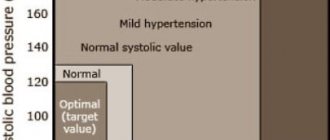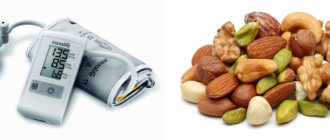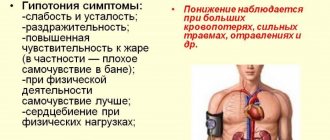Time and again we have to return to the topic of hypertension and high blood pressure. The age of men (and recently women) in Russia is too short. Very often, the cause of strokes and heart attacks is an indifferent attitude towards one’s health. And here it is important that we do not monitor blood pressure. A bathhouse with beer or many hours of effort over the beds under the scorching sun can turn into a disaster for hypertensive patients. Only very often people do not even realize that they have high blood pressure. However, you also need to be able to measure it, even with the help of the smartest instruments.
How does a person's blood pressure change?
Blood pressure constantly changes throughout the day and day.
At night, when a person sleeps, it decreases and stabilizes to normal values. In the morning after waking up, blood pressure rises and stabilizes during the day. In the evening, when you rest, the levels begin to rise slightly again and stabilize during sleep.
Why are indicators changing?
Throughout the day, blood pressure can rise and fall by several units and often people do not notice this.
Factors that influence this:
- The time of day at which measurements are taken. So, if you measure the indicators in the morning, and even in a supine position, then the numbers are overestimated. During the day, on the contrary, the values fall. In the evening, the pressure rises slightly again. At night it subsides because the person is in the most relaxed state.
- Passion for coffee drinks affects blood pressure! Caffeine quickly increases blood pressure. The same goes for alcohol.
- Stress, anxiety, overwork, work pressures are one of the common reasons why the numbers are inflated.
- Changes and surges in blood pressure may be due to chronic lack of sleep.
- Disturbances and changes in the functioning of the endocrine system also affect the malfunction of the cardiovascular system. This factor concerns mainly women during menopause or menstruation.
- Climatic conditions. Due to the cold, the patient's blood pressure may be elevated.
- Unstable pressure also occurs with VSD (vegetative-vascular dystonia), often in this case it decreases.
- Various heart diseases (arrhythmia, angina).
- Some medications also affect blood pressure, so be sure to check the possible side effects before taking medications.
When measuring indicators, be sure to relax and remove the phone away from the device.
If the indicators show high numbers, then this may be a signal of persistent hypertension.
This condition is especially dangerous if there are other symptoms. For example, headache, nausea, weakness, coordination and vision problems, chest pain, etc. In this case, immediate consultation with a doctor is required.
Can blood pressure change in a short period of time?
Can the pressure change in a few minutes, that is, very quickly? Rapid changes in the state of blood pressure occur against the background of strong atmospheric changes, even in people with problem-free health, not only throughout the day, but also in a very short time, for example, in a matter of minutes.
The reason for this may be:
- Severe physical stress. Difficult working conditions, emergency work mode and other extraordinary situations can lead to an immediate increase or decrease in pressure.
- Diet. A sudden jump in blood pressure often occurs after eating an excessive amount of trigger foods (coffee, salt, chocolate, sugar, fast foods, etc.).
- Taking medication. A rapid increase in blood pressure is caused by Paracetamol, anti-inflammatory and vasoconstrictor medications. Drugs of the narcotic group provoke sudden fluctuations in blood levels, which pose a clear threat to humans.
- Bad habits. Excessive alcohol consumption and frequent smoking, as well as hangover syndrome, lead to a narrowing of the vascular lumen, thereby contributing to a rise in blood pressure.
- Menstruation. In women, a change in pressure over a short period can occur in the middle of the menstrual cycle or several days before the onset of “red days”. In this situation, there is a rapid decline.
- Pregnancy. During the period of bearing a child, dramatic changes occur in the female body, the cardiovascular system experiences especially increased stress, which leads to sudden sharp changes in blood pressure.
- Overexcitation of the central nervous system. Prolonged fatigue, stress, excessive joyful and negative emotions, and doing hard work can cause a rapid rise or fall in blood pressure.
- Meteor dependence. A sharp change in weather conditions has an extremely negative impact on the blood pressure of people who do not tolerate weather changes very well.
- Traveling by plane. The pressure in the cabin of an airliner during flight is equal to atmospheric pressure at an altitude of 2.5 thousand meters above sea level. When the atmospheric level decreases, the volume of oxygen in the cabin of an air machine decreases significantly, which leads to a sharp increase in blood pressure in humans.
- Other situations. Hiking high in the mountains or diving into the sea at great depths provoke an immediate increase in blood levels.
Is there a norm
When diagnosing blood pressure, there is the concept of upper (systolic) and lower (diastolic) pressure.
Normally, the upper values should range from 110 to 140 mm. rt. Art., and the lower numbers should not be less than 70 mm. rt. Art.
Depending on the characteristics of the body, blood pressure may vary for each person. There is also such a thing as “working” pressure. This is a condition when the values of upper and lower blood pressure may deviate from the norm, but the person feels normal. “Working” indicators can be determined by a specialist.
Table: clinical recommendations for blood pressure norms
| Age | Upper blood pressure readings (mm Hg) | Diastolic blood pressure indicators (mm Hg) | Pulse (beats per minute) |
| 0–12 months, boys | 96 | 66 | 130–140 |
| 0–12 months, girls | 95 | 65 | 130–140 |
| 2–10, boys | 103 | 69 | 95–100 |
| 2–10, girls | 103 | 70 | 95–100 |
| 11–20, boys | 123 | 76 | 70–80 |
| 11–20, girls | 116 | 72 | 70–80 |
| 21–30, men | 129 | 81 | 60–80 |
| 21–30, women | 127 | 80 | 65–90 |
| 31–40, men | 129 | 81 | 70–80 |
| 31–40, women | 127 | 80 | 75–85 |
| 41–50, men | 135 | 83 | 70–80 |
| 41–50, women | 137 | 84 | 75–90 |
| 51–60, men | 142 | 85 | 65–75 |
| 51–60, women | 144 | 84 | 65–80 |
The most optimal indicators are 120 by 80 mm. rt. Art.
But even here there are boundaries that are also normal or relatively normal:
- 130 to 85 mm Hg. Art.
- 130 (139) by 85 (89) mm. rt. Art. - normal blood pressure, but slightly elevated.
You also need to take into account the patient’s age when taking measurements:
- For boys over one year old, the optimal values are 96 by 66 mm. rt. Art., and for girls – 95 to 65.
- For children over ten years old – 103 to 69 (figures for boys) and 103 to 70 (for girls);
- For people over twenty years old - 123 to 76 (values for guys), 116 to 72 (for girls);
- For older people, the numbers also change! In this case, men can have optimal indicators of 142 over 85, and women - 144 over 85.
With age, normal blood pressure values increase slightly, so this factor must also be taken into account when taking measurements.
Arterial hypertension
An increase in blood pressure (140/90 mm Hg and above) is observed with hypertension, or, as it is commonly called abroad, essential hypertension (95% of all cases), when the cause of the disease cannot be established, and with so-called symptomatic hypertension (only 5%), developing as a result of pathological changes in a number of organs and tissues: kidney diseases, endocrine diseases, congenital narrowing or atherosclerosis of the aorta and other large vessels. Arterial hypertension is not without reason called the silent and mysterious killer. In half of the cases, the disease is asymptomatic for a long time, that is, the person feels completely healthy and does not suspect that the insidious disease is already undermining his body. And suddenly, like a bolt from the blue, severe complications develop: for example, stroke, myocardial infarction, retinal detachment. Many of those who survived a vascular accident remain disabled, for whom life is immediately divided into two parts: “before” and “after”.
Recently I heard a striking phrase from a patient: “Hypertension is not a disease; blood pressure is elevated in 90% of people.” The figure is, of course, greatly exaggerated and based on rumors. As for the opinion that hypertension is not a disease, this is a harmful and dangerous misconception. It is these patients who, what is especially depressing, the vast majority, do not take antihypertensive drugs or are not treated systematically and do not control their blood pressure, frivolously risking their health and even their lives.
In Russia, 42.5 million people currently have high blood pressure, that is, 40% of the population. Moreover, at the same time, according to a representative national sample of the Russian population aged 15 years and older, 37.1% of men and 58.9% of women knew about the presence of arterial hypertension, and only 5.7% of patients received adequate antihypertensive therapy men and 17.5% women.
So in our country there is a lot of work ahead to prevent cardiovascular accidents - to achieve control over arterial hypertension. The target program “Prevention and Treatment of Arterial Hypertension in the Russian Federation”, which is currently being implemented, is aimed at solving this problem.
How to measure blood pressure correctly
To avoid possible pathologies and serious diseases, even a healthy person needs to measure their blood pressure once a month. However, you need to measure it correctly and be better prepared before doing so.
How to prepare for diagnosis:
- It is not recommended to drink strong tea and coffee. You must refrain from doing this at least an hour before the test.
- It is also recommended to avoid sports and cigarettes.
- If you need to take any medications, read the instructions. Many drugs affect the cardiovascular system. It is better to give them up during the study.
- Before starting the measurement, the patient must rest for at least 7-10 minutes.
Following these recommendations will help determine normal blood pressure readings and identify possible deviations.
Changing blood pressure at least 3 times during the day will give an accurate idea and a signal for consultation with a doctor.
How to measure blood pressure using a tonometer:
- Sit comfortably, relax the muscles of your arm and place it on the table. Place a cuff on the shoulder in proportion to the position of the heart.
- Make sure the cuff size matches your hand size as closely as possible. You need to be especially careful if the patient is overweight.
When is the best time to take measurements:
- First in the morning - although an hour after sleep and on an empty stomach.
- In the evening - either before dinner or after dinner, two hours later.
It is advisable to take measurements twice, leaving an interval of at least a minute between measurements.
It is best to write down the indicators somewhere. If the difference is small, then there is no need to worry - this is normal. If the values are very different, then you should definitely consult a doctor.
ABPM method - daily monitoring
Daily blood pressure monitoring allows you to identify hidden pathologies and diseases.
This is a measurement of pressure using automatic special equipment. Such a study lasts at least a day. The device independently saves readings at a certain time. This method is used to find out which values are optimal for a patient depending on the time of day. You can diagnose hypertension and (if it exists) select the appropriate medications.
The cuff is placed on the patient's shoulder and the monitor is placed (either on a belt or on a belt). In this case, a person leads a normal lifestyle, carrying a special device with him.
What you didn't know about blood pressure
7 minutes
Russia is celebrating a year of fighting cardiovascular diseases (CVD), which are the leading cause of death not only in our country, but throughout the world. Blood pressure (BP) level is one of the indicators by which the risk is assessed and CVD prevention is carried out.
For those who are not affected by the problem of hypertension, to prevent the development of CVD, it is enough to adhere to the rules of a healthy lifestyle. People diagnosed with arterial hypertension have to constantly maintain normal blood pressure levels with the help of medications such as Capoten or other proven medications to lower blood pressure. But it is equally important for both to have an understanding of ways to keep blood pressure within normal limits, as well as methods to prevent or control hypertension.
Why is this so important? Why does a doctor check your blood pressure at every checkup? Does normal blood pressure depend on age? What can you do on your own if your blood pressure suddenly rises?
{#vrez.58986}
These and other questions were answered by Alexander Grigorievich Arutyunov, Candidate of Medical Sciences, Associate Professor of the Department of Internal Medicine and General Physiotherapy of the Russian National Research Medical University named after. Pirogova, Secretary General of the Eurasian Association of Therapists, head of the clinical division of the Russian Scientific Medical Society of Therapists (RNSOT), member of the European Working Group on Emergency Cardiology.
Why is blood pressure level so important? Why does the doctor check it at every examination?
This is because uncontrolled blood pressure numbers indicate a poor prognosis. What does the phrase “poor prognosis” mean? The fact is that high and uncontrolled blood pressure numbers are directly related to an increase in the number of cardiovascular events, which, for simplicity, can be divided into two groups.
The first group is those affecting the quality of life. This is, first of all, a decrease in the cognitive abilities of the brain, that is, the ability to assimilate and process new information. The brain is active throughout life, with billions of connections between cells existing and forming. But many years with high blood pressure will inevitably lead to a significant reduction in the number of these connections. At first this will affect daily activities, for example, it will become more and more difficult for a middle-aged man to make a career. Then, decades later, this will affect social activity, problems with memory will appear, with recognizing relatives and friends, and emotional instability will develop. This describes vascular dementia, which affects one in 50 people by age 65. In my opinion, this is the most obvious example of a decrease in the quality of life. Not to mention, of course, such well-known conditions as headaches, hypertensive crises, shortness of breath, and early development of heart failure.
The second group is those affecting life expectancy. This, of course, is myocardial infarction and cerebral circulatory disorders associated with the effect of high pressure on the vascular wall, which contributes to the growth of atherosclerotic plaques, the risk of rupture of a small vessel and the formation of aneurysms.
What is the normal blood pressure and does it depend on age? Is it true that those with low blood pressure also become hypertensive as they age? How can this be prevented?
Previously, it was believed that blood pressure numbers inevitably increased with increasing age, but this is not so. Indeed, a slight rise in blood pressure to the upper limits of normal pressure may be observed, but a further rise always requires treatment. The question of treatment in each specific case is decided by the attending physician. Indeed, there are a number of studies that have noted that those prone to hypotension at a young age have a higher risk of developing hypertension in old age. But risk is just numbers. Timely prevention aimed at maintaining a healthy lifestyle can significantly reduce this risk.
The primary preventive measure is to give up bad habits such as smoking tobacco and drinking alcohol. In second place is reducing salt consumption. The role of table salt (more precisely, sodium included in it) in the development of hypertension was shown 75 years ago. For a long time, this risk factor was not given due attention, but now it is recognized as one of the leading ones. Very careful monitoring of dietary salt intake is necessary. For example, the average Muscovite consumes 16.1 g of salt per day, which is 3.5 times the safe norm.
Maintaining a normal body weight is also extremely important. First of all, the danger is posed by abdominal obesity, that is, the deposition of fat in the abdominal cavity, which sharply worsens the prognosis of hypertensive patients. There are other preventable risk factors: kidney and endocrine gland dysfunction, sleep disorders, and others.
Can blood pressure increase in a healthy person? Or is it necessarily hypertension?
Yes maybe. If we discard rare forms of hypertension, then there will still be quite a few options for the physiological rise in blood pressure. This is severe stress, and here this word should mean not only emotional stress, but also regular lack of sleep, frequent flights with changes in time zones, etc. This is a significant physical activity, especially if the body is untrained. This is the direct effect of nicotine, which causes spasm of the vascular bed in a smoker. This is the ingestion of large amounts of caffeine by a person who does not consume it regularly. In addition, taking certain medications can increase blood pressure. In all these cases, the elimination of provoking factors can normalize blood pressure.
Is it possible to understand by how you feel that your blood pressure has increased (or decreased)? And if so, how?
First of all, an increase in pressure will lead to sensations such as headaches, often in the occipital region. Nausea may appear (especially in young people), a feeling of fullness of the eyeballs, and spots flashing before the eyes (usually with a significant increase in pressure).
When the pressure decreases, a headache is also observed, which is accompanied by weakness up to fainting, dizziness, tinnitus, and darkening before the eyes.
How to prevent blood pressure surges?
A healthy person has a healthy lifestyle, giving up bad habits, and regular physical activity. In patients with hypertension, everything is the same, plus mandatory drug control of blood pressure.
Is there a way to lower my blood pressure on my own? And how do you know when you can do this and when you need to see a doctor right away? How to quickly and safely lower blood pressure during a sharp rise? They say it can be very dangerous if done incorrectly. What medications should you have with you in case of a sharp rise in blood pressure?
The set of medications for self-reducing blood pressure should be different in each case, and it should only be agreed upon with the attending physician! It is impossible to recommend a universal drug for everyone.
{#vrez.58987}
Regarding the safe reduction, it should be remembered that if there is a sharp rise in pressure upward, you should not “reset” it just as sharply, since this significantly increases the risk of complications.
Is it possible to fight hypertension with exercise? Or are pills the only option?
Lifestyle changes are important, but medication support is still required. Exercise by a patient with hypertension requires medical supervision. Especially when it comes to strength training, which is generally not indicated for patients with hypertension. Recommended exercises include the so-called cardio exercises: race walking, jogging, cycling, trekking, elliptical trainer, swimming.
Does a person with chronic hypertension ever have a chance to stop taking daily pills? Are there any more radical methods in development?
No, today, unfortunately, there are no such methods. The presence of hypertension is inevitably associated with taking medications. Yes, by changing your lifestyle you can significantly reduce the dose and even the amount of medications you take, but it is unlikely that you will be able to quit completely. Even such complex and bloody methods as denervation (surgical transection of the nerves) of the renal arteries do not provide significant improvement and are indicated only for persistent hypertension. Methods are being developed using antibodies to the main hormones responsible for raising blood pressure, but even in this case they will require periodic administration, even once every few months.
Much has been written about how blood pressure medications have so many side effects that they are almost more dangerous than hypertension. What can you say about this?
Having uncontrolled hypertension is much more dangerous than these side effects. Their occurrence is low, they are usually not lethal, and the benefit always outweighs the possible risk. But you can get acquainted with the consequences of uncontrolled blood pressure in any cardiology or neurology department.
Is it possible to prevent hypertension if there is a family history of hypertension?
Yes, you can. The presence of hypertension in the family, even in all relatives, does not guarantee the presence of hypertension in a particular person, but increases its chance. Therefore, the key issue is maintaining a healthy lifestyle from a very young age.
Is high blood pressure associated with spinal diseases?
These may be associated or related events. But it is not worth highlighting this as the only cause or mechanism.
Does normal blood pressure change during pregnancy? And during lactation?
Your blood pressure may change, but every such case is a reason to contact your doctor.
Tell me, please, can low blood pressure have negative consequences for the body? Is it worth taking medications for low blood pressure if you feel normal?
No, it's not worth it. Only cases of severe hypotension require treatment, but as a disease this phenomenon is extremely rare. Hypotension itself can be harmful, but we are talking about patients, for example, with an overdose of hypotonic drugs, and not about people who constantly live with a blood pressure of 90/60 mmHg.
In case of overdose, you should immediately consult a doctor, as too low blood pressure can lead to insufficient oxygen supply to vital organs such as the brain and heart.
Is it possible to donate blood if you have hypotension?
Hypotension (low blood pressure) is not on the list of contraindications for donation, but it is necessary to understand that too low blood pressure immediately before donating blood can lead to an even lower decrease in pressure.
Hypertension (high blood pressure) is a contraindication for donating blood. Blood loss can lead to significant, even life-threatening, fluctuations in blood pressure.
Treatment and prevention
If during the study serious deviations are found to be greater or lesser, then this may be hypotension or hypertension. It is best to contact a cardiologist immediately to prevent complications in other organs.
Hypertension is usually treated with diuretics - this is the safest and most effective way to treat the disease. Traditional methods are also used: rosehip decoctions, compresses with apple cider vinegar, hot foot baths, mumiyo.
Treatment must be individualized! Typically, herbal remedies, massages, and acupuncture are used for this.
But it is better to prevent the disease if you watch your diet. It is important to avoid excessive stress and stress; it is enough to be in the fresh air and do exercises in the morning. It is also not recommended to indulge in smoking and alcohol.
Constant jumps in blood pressure throughout the day can be very dangerous. After detecting them, it is better to inform your general practitioner or cardiologist about this.
It is better to monitor your health - this will help to avoid the occurrence of serious diseases that can lead to a heart attack or stroke.
Author of the article Svetlana Anatolyevna Ivanova, general practitioner
conclusions
The state of a person's blood pressure is subject to the circadian rhythm. If your life style, work and rest schedule takes place in a measured order, then the increase and decrease in blood pressure occurs without acute changes and is quite predictable.
Periodic fluctuations in blood counts are caused not only by the biorhythm of the human body, age and physiological state, but also by some external factors.
If the deviations have a significant gap, the cause may be coffee or alcohol consumption, emotional stress, or physical fatigue.










